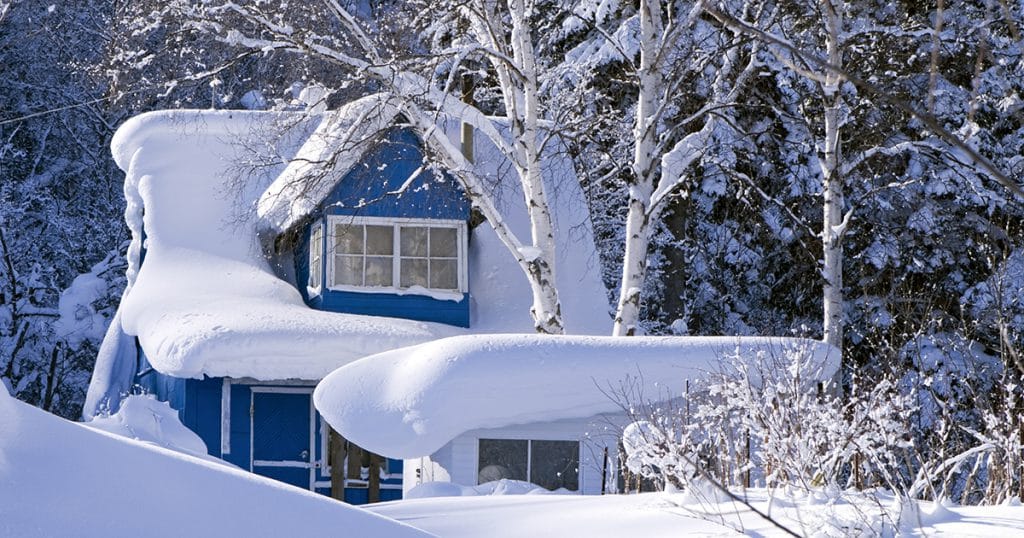Under normal winter conditions and if the structure of the building has not been modified, it is generally not necessary to remove snow from the roof.
Flat or sloped roofs are normally built to withstand snow loads specific to a region. Houses built decades ago are proof of this, as they have been tested by the harsh winters of the past.
However, the greatest vigilance is required when snow accumulations are exceptional, particularly during thaw periods or icing episodes. In such situations, the load is significantly increased and normal roof drainage can be impeded by ice formation.
Keep your eyes and ears open
But when should you suspect structural collapse or water infiltration and remove snow from your roof?
Be aware that an overloaded roof will usually call for help first. In critical times, you should be alert to warning signs such as unusual creaking and rubbing of doors and windows. These symptoms will warrant preventive intervention.
Take control of the situation
But be careful, clearing snow from a roof is a delicate job. Before removing snow from your roof, you must ensure that you are well protected. Wear gloves and proper clothing to protect yourself from the cold and non-slip boots to prevent slipping. Use wooden or plastic tools to remove snow and ice from your roof. It is also important not to use sharp tools, such as a metal shovel, as it can damage the shingles. Also use a ladder to reach hard-to-reach areas.
There is of course a risk of falling and even electrocution for the people performing this operation. It is therefore advisable to entrust this task to a roofer specialized in snow removal. Make sure he uses proper snow removal methods. Also ask if he uses specialized equipment and if he has insurance for this type of work.
It is not necessarily necessary to remove all the snow. This depends on the type of roof: on a flat roof, it will be sufficient to clear the eaves and create drainage channels for the water that runs off; on a sloping roof, it will be necessary to ensure that the water can run off normally to avoid water infiltration along the slope. In both cases, a light layer of snow should always be left in place to avoid damaging the waterproofing membrane or the asphalt shingle.
